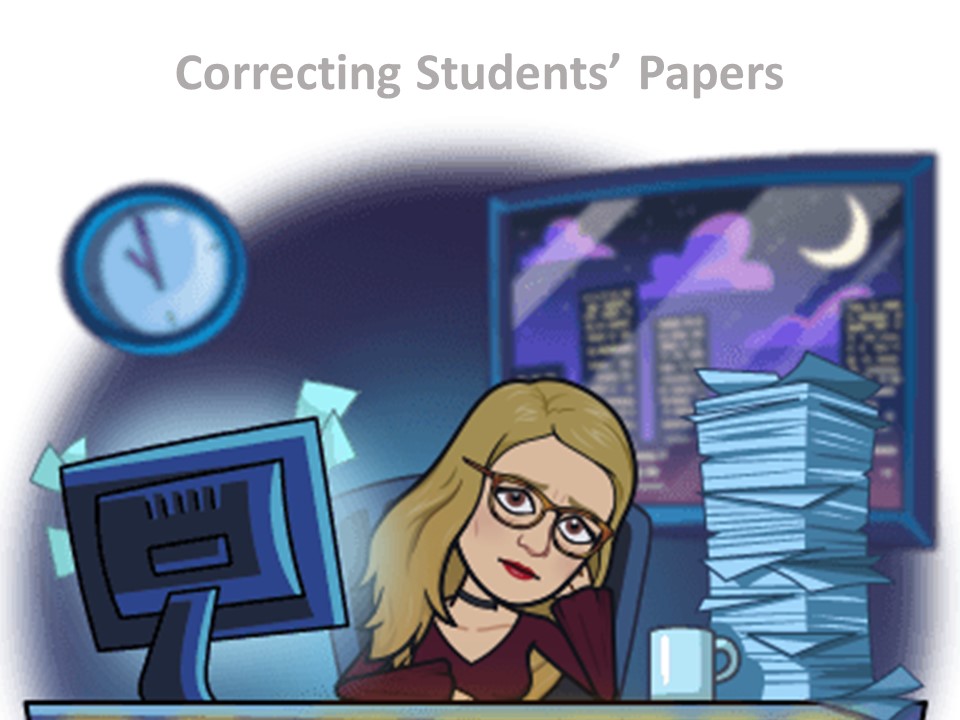After 40 years of teaching, I have retired from the classroom with many lovely memories, a few embarrassing regrets, and loads of acquired insight into what teaching is really about.
In short snippets, I am sharing some of these insights with you in the coming weeks. This is #5.
Correcting Students’ Papers – Is Time Mostly Wasted
I don’t know where I got it from, as I don’t remember collecting students’ work and marking their errors while in teacher training. Still, as a young teacher, I did it – with a red pen!
After some years, I learned that receiving a paper full of red marks would only upset and discourage the pupil. What good did those marks ever do to anybody? If I just wrote down the correct form, there wasn’t a chance in hell that the student would learn from it. More time was used by the teacher marking than all the students collectively learning from these errors. What a waste of time and energy!
My evolution out of this ancient practice was threefold:
Firstly, I started using a black pen instead of a red one, so the colour would not be disheartening as such.
Secondly, I started just marking where there was an error instead of actually correcting them. Then, in the classroom, I let the students try and correct their mistakes by themselves with the principle “Ask three before me.” They would start in pairs, then ask another pair and finally find a knowledgeable student before resorting to me for help.
Thirdly, I started choosing which errors to mark, depending on the individual. A strong student would get all their mistakes marked, while a weak, timid one would only have one or two basic types of mistakes marked at any one time. I tried to anticipate which mistakes the students would be able to correct by themselves, which mistakes were basic and which ones could be left alone, or at least for later.
Whenever the students had written an essay about a common topic, I would pick up two errors from EACH paper and collect them on a handout. There was no way of knowing which sentence came from whom. The students would then try to correct them in pairs or small groups and we would finally go through them in a good old teaching fashion on the blackboard or the overhead projector. I remember doing this still when I had a whiteboard and a data projector in the classroom. That just shows how long I have been teaching.
Sometime last decennium I also learned that it was more beneficial for the students to receive feedback on their essays in the form of a written text than a number/letter grade. It took me some time to develop, but in the end, my students started appreciating my short notes as feedback to their texts.
These notes were more about my thoughts after reading the student’s story than pointing out their errors. Now and then, I could also give them an estimate of what level their writing was at, and what they could do to aim higher. That’s when the notes could even have been characterised as feedforward.
I especially remember a student in teacher training who told me what a relief it had been to receive a nice note instead of a lot of red ink and a grade on her first paper in my course.
I will be discussing the benefits of writing in the coming blog posts.

